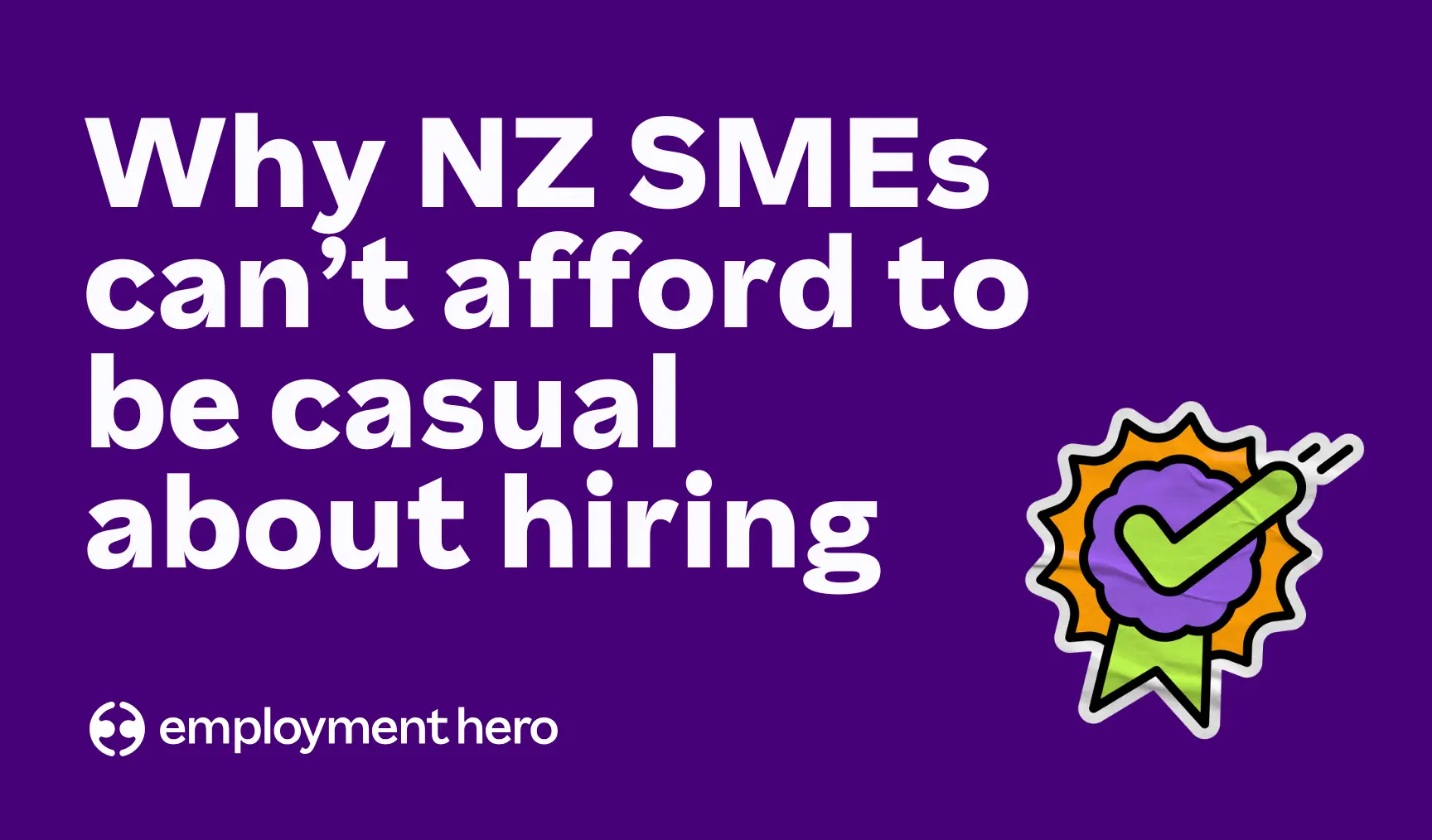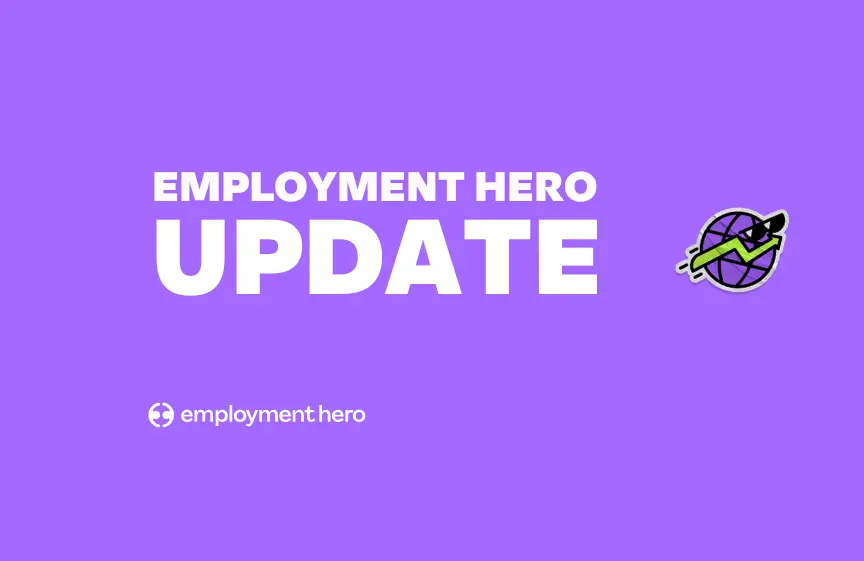How to get prepared for EOFY in NZ as a small business owner
Are you frantically looking for business receipts at the end of the financial year? Follow these tips to get prepared for EOFY in New Zealand like a pro.

Contents
Unless you’re a seasoned payroll professional, the thought of the end of the financial year can strike dread into the heart of many business owners. However, it doesn’t need to be too tricky. A little planning and preparation can go a long way towards making the end of the tax year just another part of your business admin. We’re here to take you through the end of the financial year (EOFY) processes so you can put more time back into your business.
What are the legal requirements for business owners during EOFY?
The main legal requirements around the end of financial year involve your business finances, including payroll, expenses and Inland Revenue (IRD) contributions. You will need to fill out certain forms to declare your finances to IRD for the financial year, and submit reports that back up that information. They will then let you know what tax you owe. The 2023-2024 tax year falls between 1 April 2023 to 31 March 2024. If your business is active and New Zealand resident for tax purposes, your two main tasks in terms of financial reporting are in filing an income tax return and completing a financial statement. For the 2023-2024 tax year, these must be completed and submitted to IRD before 7 July 2024. The penalty for filing late can be up to $500 NZD, so it pays to get it in on time.
Step 1: File a companies income tax return
The IR4 form is the main way to submit an income tax return. This can be completed in paper form, using the digital PDF or you can fill in the details, questionnaire-style, through myIR online. This is a wide-ranging document, which will require a lot of details. The information required includes:
- The company address, name, IRD number and BIC code.
- Any income received over the last year eg. dividends, business activities, interest.
- Total revenue over the year (or net loss, if applicable).
- Total tax payable – the form will guide you through calculating this.
- Bank details for any potential tax refunds.
- Eligible tax credits.
- The details of any business shareholders.
Once completed, the form can be submitted to IRD. You can then choose how you wish to pay your tax bill over the coming year. For those small business owners in their first year of business, they will have to pay the full bill by the following 7 February. That allows almost 11 months from the end of the financial year to pay the full amount. For businesses in their second year and beyond, they can choose to pay the bill in instalments over the year ahead, known as provisional tax. This can be a helpful way to manage cash flow, as opposed to manually saving away in advance of the final bill at the end of the tax year.
Step 2: Complete a financial statements summary
As well as the IR4 form, IRD requires a copy of your financial records for the tax year. That can add up to a lot of documentation that you have to send and which IRD have to parse through. One way to speed up this process is to complete a financial statements summary, also known as an IR10 form. As with the IR4, this can be completed via a PDF form or online on myIR. This form acts as a balance sheet, showing all your total income, expenses, assets and liabilities. This way, IRD can get a clear picture of your business finances to ensure that you’re paying the correct tax and are making compliant financial decisions.
What documents should small business owners keep throughout the year?
For all New Zealand business owners, keeping records isn’t just a smart decision – it’s required for compliance. Legally, all businesses must keep comprehensive financial records for at least seven years, including all PAYE transactions, payruns and Kiwisaver contributions. Employee details should also be kept for at least six years. As a business owner, you must keep the following records:
- Transaction records: cashbooks, list of people who owe you money, list of people you owe money to.
- Income: invoices, credit card sales, debit and credit card notes.
- Business expenses: invoices for purchases, receipts for credit card purchases.
- Banking: bank and credit card statements, interest statements.
- Worksheets: tax return calculations, GST tax invoices, tax deductions.
- Asset register: list of assets and liabilities, depreciation schedule and calculations.
- Financial accounts: balance sheets, final profit and loss statements, dividend statements.
- Legal documents: sale and purchase agreements, lease agreements, credit agreements.
- Employee details: wage records for all PAYE, Kiwisaver, student loans and child support deductions, employment agreements.
- Benefits: full records of any benefits eg. entertainment expenses, health insurance discounts etc.
Having all the information already to hand, will make the end of financial year tasks so much easier.
6 tips to get prepared for the end of financial year
1. Understand your deadlines
We know how hectic things can get for business owners – blink once and you’re right in the middle of winter. That’s why it’s really important to be across the deadlines for the financial year, whether that’s the final balance date, your provisional tax payments or the official filing deadline. Stick them on your calendar or set notifications on your phone – whatever works to ensure that everything goes out on time.
2. Know where your records are
No one wants to be digging through a filing cabinet or frantically searching computer servers in the last week of March. Make sure that your last year of records are in an easy-to-find and secure place, so that accessing critical information is quick and simple. That’s where payroll software comes in handy, providing a single space for all that critical data that is updated consistently through the year.
3. Complete your payroll obligations for the financial year
Completing your last payday filing for the 2023-2024 tax year is a key task before you start working on the big tax return. Make sure your final pay run is complete and accurate so that you’re free to take stock of the last year without anything outstanding. You’ll also need to reconcile your payroll data for the year with what has been reported to IRD, to ensure that it all balances. That includes reviewing employer superannuation contribution tax (ESCT) rates for all employees.
4. Decide on how you’ll file your information
There are a few ways to file your end of year information to IRD, including paper forms or online through myIR. Decide your method in advance and consider how you’ll make it work. Remember, you’ll have to allow time to get a paper copy to IRD, or if filing digitally, you’ll have to ensure you have ready access to myIR. You don’t want to be locked out of your account on deadline day!
5. Ensure your employee data is all up to date
Part of your end of financial year filing will include employee records, so make sure that all the information you have on file about your team is correct. This might require some time checking in individually with your employees, so it’s crucial to factor in some time for them to respond and check themselves.
6. Look ahead to next year
While EOFY filing is all about looking back on the past year, it can also be a great chance to look ahead. Collecting all this information and submitting the required data can be illuminating – is there any way you can make the financial year preparation easier next year? It could be a good opportunity to consider bringing in HR and payroll software to digitise the whole process in one easy-to-access portal.
Simplify your payroll and income tax return with Employment Hero
Bringing in payroll software like Employment Hero can be a gamechanger for your business, especially at the end of financial year. When surveyed, Employment Hero users said that their business was 52% more efficient with our software, and they used 65% less paper. On average, they experienced a 338% return on investment after three years with Employment Hero. Our all-in-one HR, payroll and benefits platform makes record-keeping, reporting and workforce management easy at EOFY. Learn more about how we can help you at tax time by speaking with one of our small business specialists today.
Looking for more advice? Download our EOFY checklist here
Disclaimer: The information in this article is current as at 12 February 2024, and has been prepared by Employment Hero Pty Ltd (ABN 11 160 047 709) and its related bodies corporate (Employment Hero). The views expressed in this article are general information only, are provided in good faith to assist employers and their employees, and should not be relied on as professional advice. The Information is based on data supplied by third parties. While such data is believed to be accurate, it has not been independently verified and no warranties are given that it is complete, accurate, up to date or fit for the purpose for which it is required. Employment Hero does not accept responsibility for any inaccuracy in such data and is not liable for any loss or damages arising either directly or indirectly as a result of reliance on, use of or inability to use any information provided in this article. You should undertake your own research and to seek professional advice before making any decisions or relying on the information in this article.
Related Resources
-
 Read more: 10 customer service interview questions for employers
Read more: 10 customer service interview questions for employers10 customer service interview questions for employers
Hiring for a customer service role? These 10 interview questions will help you find the right person for the job.
-
 Read more: Still Coasting? Why NZ SMEs Can’t Afford to Be Casual About Hiring
Read more: Still Coasting? Why NZ SMEs Can’t Afford to Be Casual About HiringStill Coasting? Why NZ SMEs Can’t Afford to Be Casual About Hiring
The casual approach to hiring is costing you – find out how to snap out of it.
-
 Read more: SEEK Cut the Cord. Here’s What We’re Doing About It.
Read more: SEEK Cut the Cord. Here’s What We’re Doing About It.SEEK Cut the Cord. Here’s What We’re Doing About It.
Seek is ending Employment Hero’s API access. Read about what we’re doing and how we are building a faster and…











